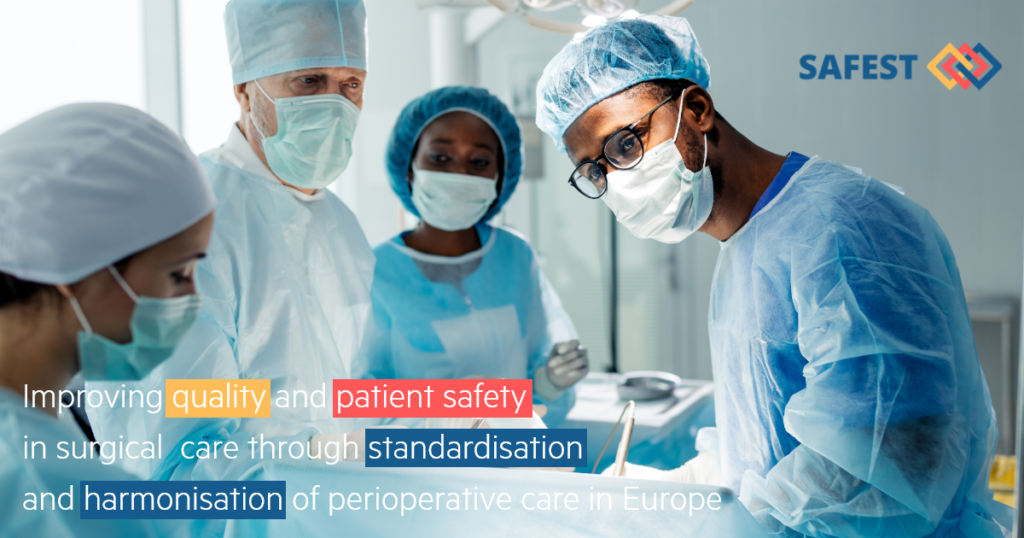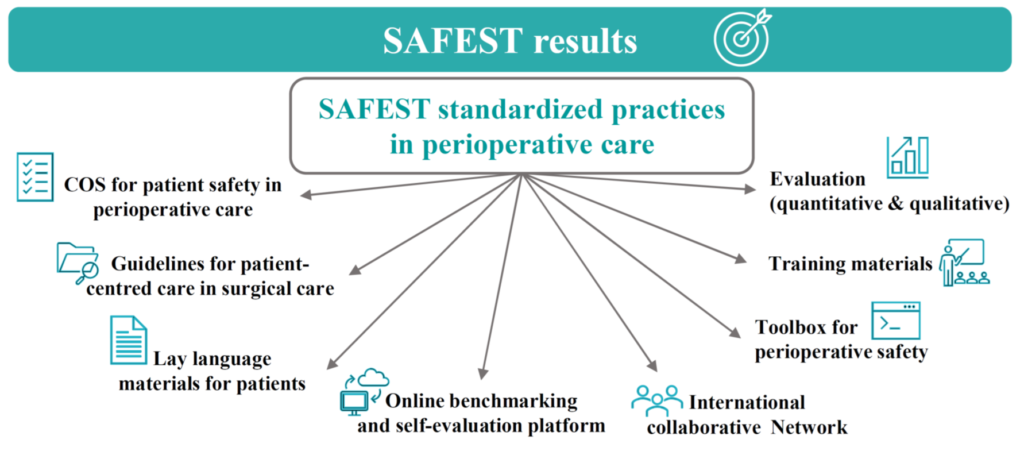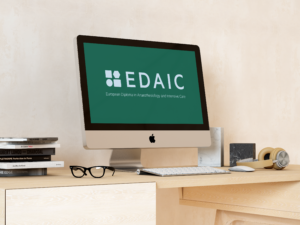Newsletter 2022
Newsletter September 2022: ESAIC embarks on a new EU Project - SAFEST
Daniel Arnal, Maria Wittmann
ESAIC Patient Safety and Quality Committee

It’s been more than two decades since European anaesthesiologists, through the European Board of Anaesthesiology (EBA) and the European Union of Medical Specialities (UEMS) published their Guidelines for Safety and Quality in Anaesthesia3. A few years later, in 2010, ESA (now ESAIC, EBA and the National Anaesthesia Societies Committee (NASC) launched the Helsinki Declaration for Patient Safety4, a milestone that has provided a framework to develop the patient safety strategy in many hospitals.
Together with the effort guideline production and dissemination, ESAIC has acknowledged the need to evaluate and promote the implementation of the recommendations. To that purpose, the Patient Safety and Quality Committee (PSQC), supported by ESAIC Patient Safety Partners, launched the Helsinki Declaration Follow Up Project5 and is working on different implementation projects6. The latest of these projects to be incorporated is the SAFEST Research Project.
SAFEST calls for ‘Improving quality and patient SAFEty in surgical care through STandardisation and harmonisation of perioperative care in Europe’ and it is a four-year research project receiving funds from the European Union’s Horizon Europe research and innovation programme under grant agreement No. 101057825.
The SAFEST aims to provide the knowledge necessary to contribute to the effective improvement of patient safety in the perioperative period, reducing loss of life and harm to millions of patients while cutting significant costs for the EU healthcare systems and promoting a healthier and more resilient Europe.
To reach this objective, ESAIC is taking part of a consortium of nine European organizations from Spain, Netherlands, Czech Republic, Estonia, Germany, Portugal and Belgium and will liaise with all sorts of stakeholders, patients and patient representatives, as well as with institutions, surgery and nursing scientific societies and industry partners.
Researchers will develop a set of patient-centred evidence-based standardised practices and a core set of outcomes set for patient safety in perioperative care through a systematic review of clinical practice guidelines and an umbrella systematic review followed by a Delphi survey process and finalising in a consensus conference. These safety standards (SAFEST practice standards) and Core Outcomes Set (COS) will cover the care continuum from primary, outpatient to home care levels (figure 1).

Figure 1
Following the standards agreement, the consortium will create a web-based self-evaluation platform for the SAFEST practice standards that will be applied in 10 predefined hospitals distributed in five different European countries. The platform is ultimately meant to be used by hospitals across the EU and worldwide to self-evaluate and benchmark performance.
Using the evaluation to build an individualised plan, the SAFEST practice standards will be implemented in the 10 hospitals to identify barriers and facilitators for the process and to investigate the link between standards implementation and improved clinical outcomes. The effects will be evaluated at the hospital and at the patient level. To achieve this, a European Perioperative Quality Improvement Learning Collaborative (PQILC) shall be established, and it will stimulate the adoption of the perioperative patient safety standards. The PQILC will be multicomponent and driven by the continuous advice of first-line professionals and patients (Figure 2).

Figure 2
ESAIC’s broad network will help reach these professionals, patient advocates and other stakeholders. ESAIC anaesthesiologists will provide lead and clinical knowledge to the project, whereas the ESAIC communication team will lead the Dissemination and Communication Work Package by mapping the perioperative stakeholders and preparing a communication plan. The communication channels will include a
- The project website (http://safestsurgery.eu) is the primary information source, where all materials will be published in a timely manner.
- SAFEST platform. Key to engaging the largest possible number of EU hospitals, their networks and other key stakeholders. It is one of the main assets and innovations of the project, as, to our knowledge, there is no similar initiative offering an international benchmarking platform in standardised practices in surgical patient safety.
- Open access repository. All publications will be made available online in open access.
- Social media. A LinkedIn dissemination group that includes all consortium partners and their networks and a ResearchGate group to facilitate communication with the research community.
- A podcast channel to disseminate and communicate intermediate and final results.
- Available on the project website and distributed to subscribers via e-mail.
- Events and conferences. Four major events are to be organised during the project’s lifespan: (1) the European Surgical Patient Safety Conference, (2) a meeting with policymakers, (3) an ESAIC-led advocacy meeting, and (4) the final SAFEST conference.
Overall, targeting an improvement of adherence to evidence-based standardised patient safety practices in perioperative care by 15%, researchers expect to reduce the frequency of surgical complications by 8% after 18 months of a multicomponent intervention.
ESAIC and the Consortium partners expect that the successful results will be transferred to appropriate decision makers in legally regulated systems at local, regional, national and European levels, and end healthcare givers shall be convinced to implement the standardised practices for patient safety in their hospitals. So much work ahead, no time to lose. Stay tuned for more related news.
References
- Pearse RM, Moreno RP, Bauer P, et al. The Lancet 2012; 380:1059–1065.
- DG XXIV – Consumer Policy and Consumer Health Protection. 2008.
- Mellin-Olsen J, OʼSullivan E, Balogh D, et al. European Journal of Anaesthesiology 2007; 24:479–482.
- Mellin-Olsen J, Staender S, Whitaker DK, et al. European Journal of Anaesthesiology 2010; 27:592–597.
- Preckel B, Staender S, Arnal D, et al. European Journal of Anaesthesiology 2020; 37:521–610.
- Arnal D. https://www.esaic.org/esa-news/newsletter-october-2021-patient-safety-at-the-heart-of-esaic/ (accessed Aug.25 2022).
[maxbutton id=”1″ url=”https://www.esaic.org/newsletter/” text=”Read the Newsletter” ]










